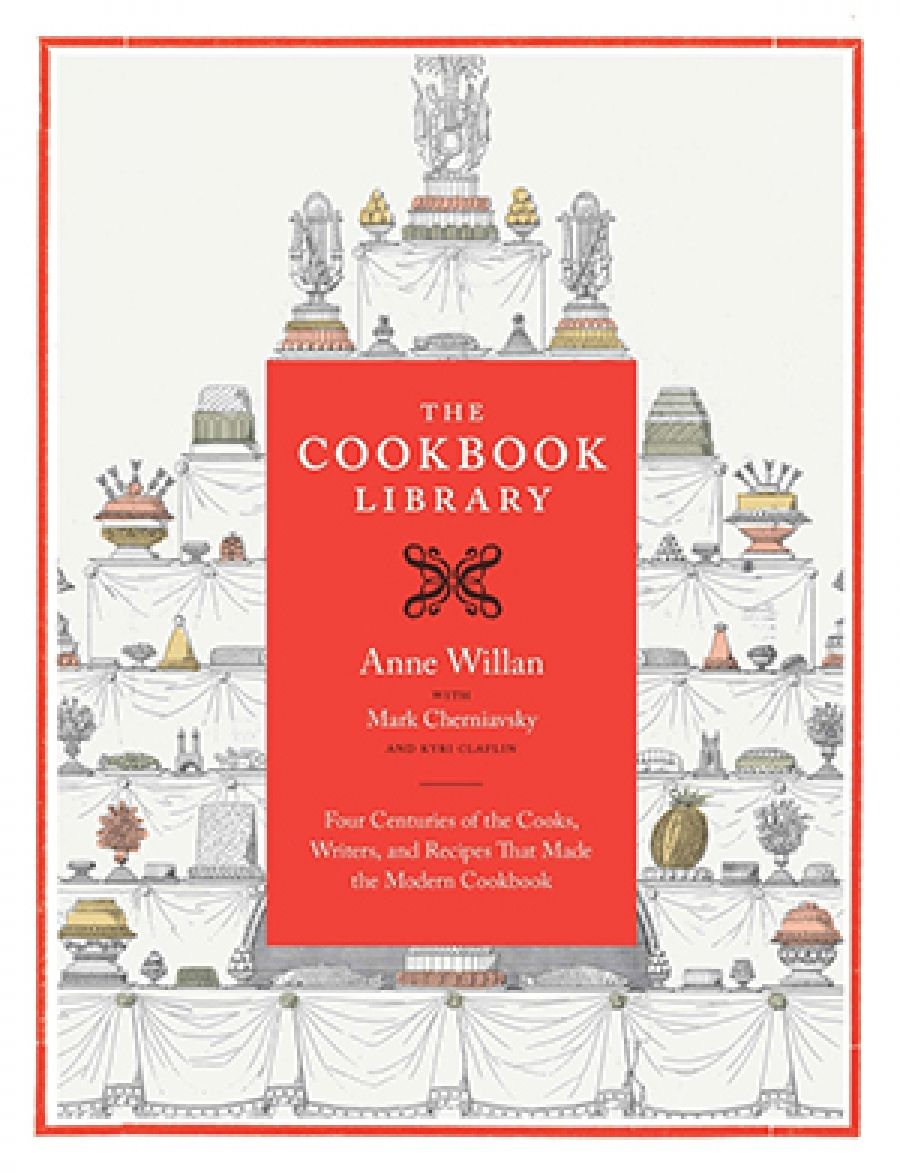
- Free Article: No
- Contents Category: Food
- Review Article: Yes
- Online Only: No
- Custom Highlight Text:
The Cookbook Library is an eminently readable and informative survey of the development of European (and North American) culinary literature from antiquity until the early nineteenth century, from Greek and Roman texts to Antonin Carême. The project, inspired by Anne Willan and Mark Cherniavsky’s extensive personal cookbook library, draws on Willan’s considerable professional cookery expertise: in addition to setting up her own cookery school in Paris, La Varenne, in 1975, Willan has published extensively on French cookery and is a leading authority on the subject. But this is much more than a catalogue of an indisputably fine private collection. It covers the subject broadly, way beyond the confines of the couple’s own substantial holdings and their linguistic comfort.
- Book 1 Title: The Cookbook Library
- Book 1 Subtitle: Four Centuries of the Cooks, Writers, and Recipes That Made the Modern Cookbook
- Book 1 Biblio: University of California Press (Inbooks), $75 hb, 340 pp, 9780520244009
While cookbooks by definition are about recipes, many encompass much more than that, and in their evolution over the centuries have also offered advice on sundry matters: health, medicine, gardening, manners, and household management. As well as describing how cookbooks have developed, considerable information is offered on dining habits and related social customs throughout the centuries, much of it informative and entertaining. Despite the present-day fashion for elaborate and complex cooking – even culinary Olympics – it all seems dull compared with Elizabethan England:
an athletic display known as the Alamain leap was popular: a jester would run into the room, leap over the heads of seated guests, and plunge into an outsize custard pie ‘to the unspeakable amusement of those who were far enough off from the tumbler not to be bespattered by this active gambol’.
As the centuries progress, we move away from the royal and aristocratic eating of the earliest publications and the dedicated realm of the professional chef, to the cuisine of the prosperous middle classes as they became a key market for culinary literature during the eighteenth and early nineteenth centuries. And it was during the seventeenth century, especially in England, that women gained prominence, writing cookbooks for female readers. Willan covers her field with consummate ease and reveals how many recent culinary preoccupations had earlier manifestations – the bestseller, the pirated edition, the celebrity chef, nouvelle cuisine (from the eighteenth century).
It is no surprise that the development of the cookbook rode on the back of the invention of printing in Europe. What is surprising is that cookbooks were among the first printed books. Four were printed between 1474 and 1500, but, as Willan notes, these ‘give little hint of the flood that followed’. From the sixteenth century, cookbooks become a genre of their own. The clear message for cooks from this volume is: publish or perish. Without their publications, most of the cooks and writers from the Renaissance onwards would simply have disappeared into oblivion. The present-day publishing frenzy has a long and distinguished history.
This is a most sophisticated production from the University of California Press, printed on good matte cream paper, with generous margins and attractive typefaces. The carefully selected illustrations are in black and white, with no garish colour plates on glossy paper intruding upon the elegant design. Since the volume ends with the early nineteenth century, most of the images reproduced here were originally black-and-white woodcuts or engravings, so this is entirely appropriate. There are enough images of kitchens, cooks, table designs, and text pages to give a sense of the original publications. The extensive bibliography will no doubt form the basis of desiderata for a new generation of collectors, either of originals or of the increasing numbers of quality facsimiles.
The book is arranged as an historical narrative in chapters, interspersed with shorter entries on relevant topics – ‘Literacy in the Kitchen’, ‘Women Cookbook Authors on the Continent’, ‘The Iceman Cometh’ – and a selection of recipes from the relevant period closes each chapter. These are first given in the original (or in an English translation of the original), followed by Willan’s adaptation. As much as one can attempt to recreate meals from the past, with her guiding hand this is a good place to start.
One recipe that has already become a staple is an apple soufflé from that most recherché of cooks, Antonin Carême, published in his Le pâtissier royal parisien (1815). Unlike his complex pièces montées, one of which decorates the dust jacket, the apple soufflé is a masterpiece of understated simplicity: sweetened apple purée to which is added meringue before baking. What could be easier, with a modern oven and its guaranteed even temperature, or more delicious as a light end to a grand repast?
In a market glutted with books on cookery that offer next to nothing fresh or of interest, this authoritative volume, which reminds us of our culinary heritage, is like a breath of fresh air. It will no doubt stimulate the collecting market for antiquarian cookbooks, and there is a final chapter by Cherniavsky on this topic. The Cookbook Library will probably not be found in bookshops, competing with those glossy volumes from celebrities like Jamie and Nigella, let alone our local stars. Bypass the dross and seek out this volume for a most rewarding read on the history of cookbooks and for the ownership of a beautifully produced book – one for the library, not for bespattering in the kitchen.


Comments powered by CComment